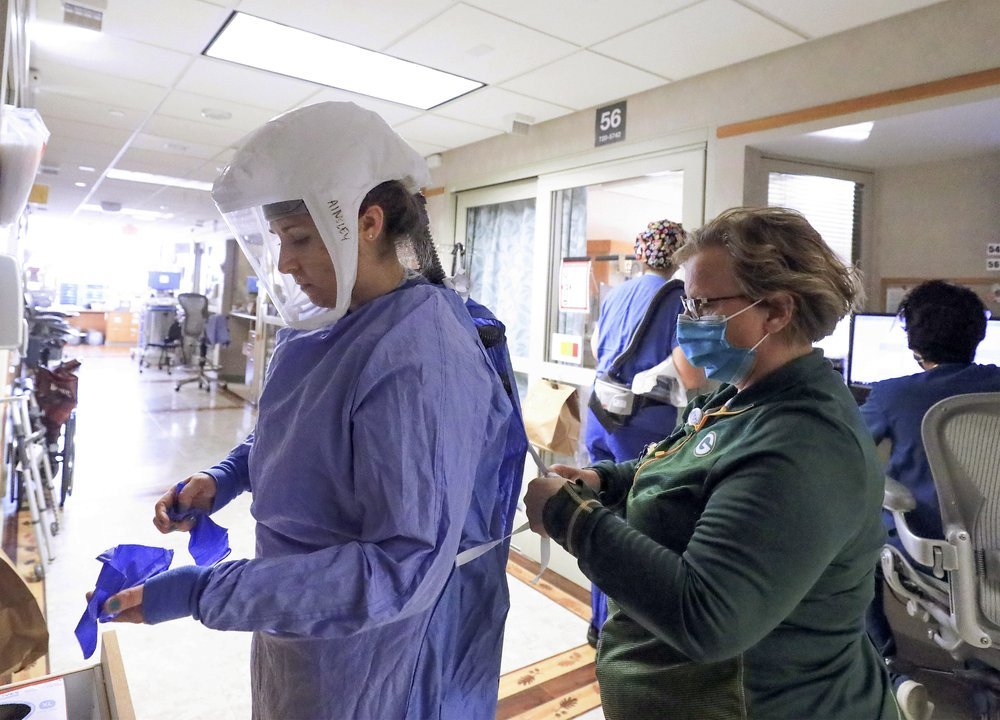Under the epidemic the appearance of all living beings in the United States: difficulties challenges nightmares tears
The COVID-19 epidemic in the United States is still spreading, and the epidemic has brought tragedy, pain and misfortune to countless ordinary people. Some people have lost their siblings, some children have lost their parents, and many front-line medical personnel are facing heavy work and heavy pressure.
A single mother can afford 12 children after the death of a loved one.
On December 2, CNN reported that Alabama woman Francesca McCall and her sister Chatral promised each other that if something went wrong, they would take care of the other party’s children.
In September, Chatlar died of COVID-19, and more than a month later, her husband died of the same disease. Therefore, McCall, a single mother who has raised seven children, also brought her sister’s five children to the family to raise together.
The age of 12 children ranges from 1 to 17. McCall is currently working from home, and her mother is also helping to take care of the children at home. McCall wanted the children to grow up together, but had to admit that it was a challenge for her to live together.” The boys live in one room, and the girls live in the other two rooms, each next to the other.”
McCall said, “It can sometimes be a little messy to have every child online and feed them before class. Once they are set up, they will be fine.
McCall said that the children are recovering from the tragedy of losing their parents, but the days are still difficult, especially when Christmas is coming.
American nurse: Every night, close your eyes and you can remember the patient’s deathbed scene.
The epidemic has also made the work and life of medical personnel difficult. Shannon Tapia, a geriatrician doctor in Denver, Colorado, couldn’t help crying as he talked about the work he’s done for the elderly during the pandemic.
“Many of patients in long-term care facilities have died from COVID-19, and she has long stopped counting how many patients have died,” Tapia said. The death rate has soared, and the death toll is much different from the early days of the epidemic, and now it is worse.”
As a doctor treating geriatric patients, patient death is no stranger to Tapia. She believes that when a person comes to the end of life, the most important thing is to be with the people they love. But COVID-19 has made it impossible. “The family of patients can’t visit them, or only visit them through the screen or wear protective clothing once. This is simply devastating loneliness.
Ellison Berner, head nurse in the emergency room of a Denver hospital, said her job never lost her sleep before the pandemic. But now, she often has nightmares or recreates work scenes in her mind.” When I close my eyes, the dying patient comes to my eyes, or I have to tell their families that their relatives are no longer there. This is the most recreated scene in front of you.”
Berner also said she rarely cried at work before the pandemic, “for the sake of relatives, to be strong, to be patient”. But during the pandemic, too many people in the emergency room cried. “Dead patients have no relatives around them, but they need someone to accompany them on their deathbed”.
Colorado reported a record number of daily hospitalizations due to COVID-19 in November. Governor Jared Polis said recently that more residents in the state are infected with the novel coronavirus than at any time since the outbreak, and about one in 41 residents has tested positive for the virus.
U.S. health officials: The next three months will be the most difficult period in the history of public health in the United States.
According to data from Johns Hopkins University, on the 2nd, the number of daily reported deaths from COVID-19 in the United States reached 2,658, while the data of the “COVID-19 Tracking Project” in the United States showed that the number of hospitalizations due to COVID-19 exceeded 100,000. Both data hit a new high, and the pressure on front-line medical staff has never been so great.
The average number of new confirmed cases in the past week was 161,448 per day, nearly 2.5 times the summer peak in July; the average daily death toll was 1,531, which is higher than the summer peak (about 1,130) and lower than the peak of the number of deaths during the epidemic (2,240).
But as the number of hospitalizations increases, the situation may get worse. Several experts recently warned that the daily death toll may exceed 2,000 or 3,000, or even close to 4,000. Health experts also said that the number of confirmed cases and hospitalizations is expected to increase further in the coming weeks as cases of infection caused by Thanksgiving gatherings appear.
Robert Redfield, director of the Centers for Disease Control and Prevention, said on the 2nd that the number of patients admitted to COVID-19 in American hospitals will remain high in the coming months. This December, January and February next year will be difficult times. I believe this will be the most difficult time in the history of public health in the United States, and our health care system will be under great pressure.”



